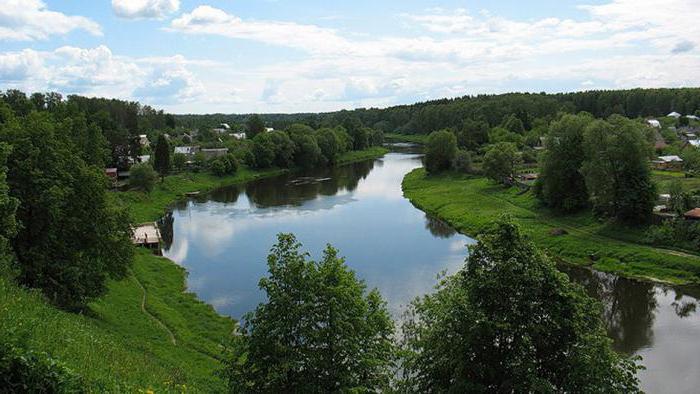The Moskva River flows through the central part of Russia, passes through the capital of the largest state in the world. Its length is 500 km. The source is the slope of the Smolensk-Moscow Upland, and the mouth - p. Oka. The tributaries of the Moskva River in Moscow are mostly hidden in drainage collectors. That is why few people can believe that there are about seventy of them in the city.
This watercourse is the left tributary of the Oka River and is navigable throughout its length. The Moskva River is the main water supply point of the capital. Only a small part of the watercourse passes through the main city of Russia - 80 km.
Through the tributaries of the Moscow River and canals, ships enter the capital from the Azov, Black, Caspian, Baltic and White Seas. Therefore, this water stream is sometimes called the river of 5 seas. The Moscow River has a very extensive river system and a high density. In total, 362 large and medium water flows and more than 500 small streams flow into it.
The large left tributaries of the Moscow River, the list of which is presented below, play a large role in the life of the capital:
- Iskona.
- Istra.
- Nerskaya.
- Bathhouse.
- Ruza.
- Gatehouse, etc.
Large right tributaries of the river: Koloch, Lusyanka, Pakhra, Severka, Kolomenka, etc.
River Ruza
The largest left tributary is the Ruza River. Its length is 145 km, the average width of the stream is 10-15 m, the maximum distance relative to the opposite banks is 50 m. The basin area is almost 2 thousand sq. Km. The source of Ruse - the outskirts of the village. Small Cool. The entire length of the river runs along the Moscow Upland. Ruza has a narrow valley, the banks are high, hilly. The bottom of the river is silty, in some places there are pebble areas, the depth is shallow. The banks of the channel are covered with forests, but sometimes there are small sandy beaches. It is worth noting that all the tributaries of the Moscow River are distinguished by their beautiful nature . The water is clean, the flow is unhurried, not more than 3 m / s. In winter, Ruza freezes, becomes covered with ice in November, ice drift begins in April. In the period from April to October rafting is possible on the river. On its shores, settlements are rarely found, mainly small villages. Ruza has 7 relatively large tributaries: Voloshnia, Mutnya, Belaya, etc.

Nerskaya River
The Nerskaya River is another large left tributary of the Moscow River, 92 km long. The flow begins in the Orekhovo-Zuevsky district at an altitude of 122 m above sea level. A swamp area is widespread at the head of the river, so a special canal was built to maintain the water level. The catchment area is almost 1,500 square meters. km The channel is flat, rarely wriggling, has a shallow depth (maximum 3.5 m). During the spring flood, the water in the Nersky stream tends to rise, the rise is 10-13 m, and the river itself spills 5 m at this time.
The watercourse is very popular in terms of tourism: there is the opportunity to go kayaking, comfortable sandy beaches in some areas, forest glades rich in mushrooms and berries near the coast.
Istra River
Describing the left tributaries of the Moscow River, I want to highlight the river. Istra. It has a length of 113 km. The source of the river is a swamp located in a forest, not far from the village. Povarovo Solnechnogorsk district. The catchment area is about 2,000 sq. Km. The food of the river is snow. The water flow has expansion in the lower reaches, the maximum width increases in this area by 30 m.
It’s hard to call a bottomless river. Its maximum depth is a little more than a meter, the sandy bottom. The flow is calm, not more than 0.3 m / s. It has a picturesque valley and is considered to be the most beautiful river in the Moscow region. In the lower reaches of Istra, the reservoir of the same name was built. Also, the river is developed in terms of tourism. Sanatoriums and rest houses have been built on its shores; water sports are popular.
Pakhra River
The largest right tributary of the Moscow River is Pakhra. The length is 135 km, and the catchment area is 2,500 sq. Km. The river begins to flow on the outskirts of the village. Myachkovo Ramensky district. Food stream has snow, and its channel is often meandering. From November to April, Pakhra freezes. The ice cover, as a rule, is 0.5 m thick. But the river has a peculiarity: it does not freeze annually. There are many settlements on the coast: Podolsk, pos. Shishkin Forest, Dubrovitsy, Zelenaya Sloboda, several villages and two health resorts.
Severka River
The Severka River is a 98 km right tributary. The water flow originates on the outskirts of Domodedovo (the urban district of Moscow). The banks of the river are hilly, rocky rapids in the lower reaches. The channel is winding, narrow (maximum width is about 4 m). In the summer it is covered with thickets of reeds. It has 8 relatively large tributaries; small villages are located on the banks of the river.
Kolomenka River
Considering the right tributaries of the Moscow River, you can pay attention to the river. Kolemenka. Its length is 51 km. The source of the river is Stupinsky district of the Moscow region. The valley is narrow and winding, but in some places it extends to 10 meters. Small villages are located on the banks of both the right and left sides, several small tributaries adjoin the river.